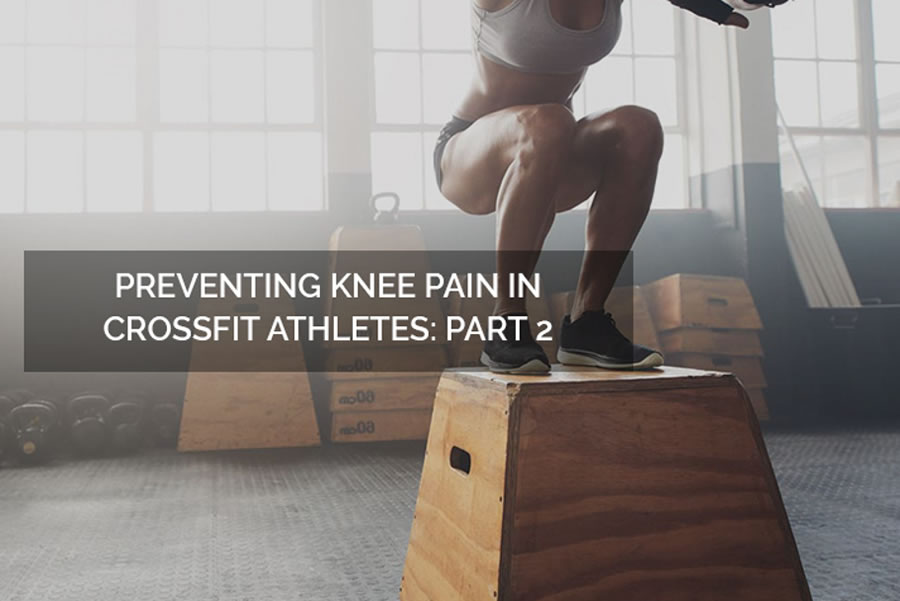
Effortless Superhuman Secrets Revealed – The whole-body assessment
(Continued from Preventing Knee Pain in CrossFit Athletes: Part 1)
By restoring balance to your body (full joint range of motion and full muscle length), you can resolve pain signals. Here at Effortless Superhuman we call this state of full range of movement and being symptom-free ‘clinically clear.’
CLINICALLY CLEAR = Full range of movement, full muscle length, symptom-free!
Now that we have discussed the Health and Pain & Dysfunction levels of the Performance Pyramid, we can move upwards to the Mobility & Flexibility level.
Mobility & Flexibility
As we look at mobility and flexibility, this is where you can begin to assess yourself at home and determine if you’re lacking in any specific range or movement pattern. These self-tests may give you some insight into why you’re getting knee pain and how to overcome this challenge.
So, what mobility and flexibility tests are important and how can you perform these self-tests?
Ankle Mobility Test
Try this simple knee-to-wall (KTW) test to determine if you can achieve the minimum mobility standards.
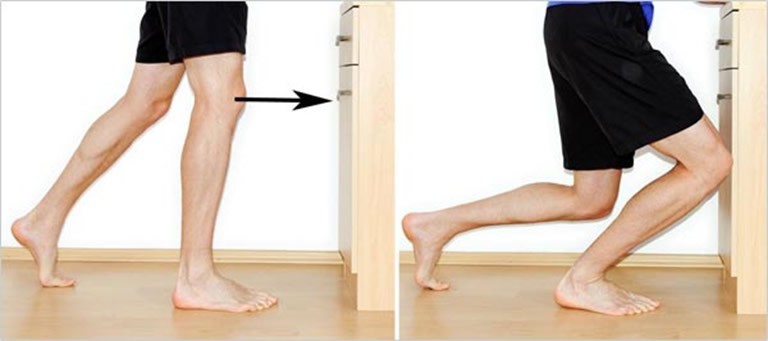
- The heel must remain flat on the floor, and it’s important that the arch of your foot does not collapse.
- Your goal is to bring your kneecap forward to touch the wall.
- Once you have established the maximum distance you can achieve in good form, a measure that distance from the wall to the tip of your big toe. What’s your score?
- 9cm is the minimum distance required for effective movement. For many CrossFit athletes, a score of 12-15cm is ideal.
Active Straight Leg Raise (SLR) Test
Try this simple test to gain an estimate of how well you move around the hip. This test is often thought to be a measure of hamstring flexibility. However, our experience suggests that it is a measure of neural tension (system wind-up), cervical (neck), thoracic (middle back), and lumbar (lower back) tension while estimating head-to-toe fascial tightness. Far more than meets the eye.
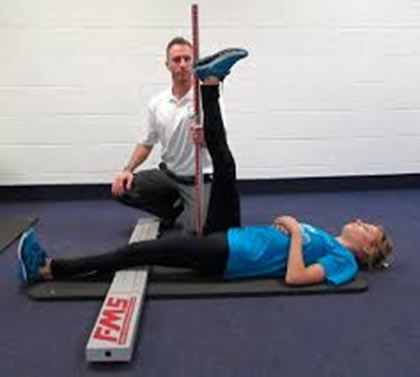
Scoring System
1 = Dysfunctional
2 = Minimally Functional
3 = Optimal
Lie on your back, place a small rolled-up towel under one knee, so there is slight flexion of that knee. Keep the opposite knee straight and lift that leg as high in the air as you can holding at the top for 2 seconds.
Scoring
Ideally, someone will hold a stick vertically such that the stick is in line with the top of your kneecap.
If the heel on your test leg can move past the stick, then you immediately score a (2) or minimally functional score. If the heel cannot move past this vertical line, then you receive a (1) or dysfunctional score.
If you receive a (2) score, then the assessor should find the halfway point between the top of your knee cap and the bony protuberance at the front of your hip (your ASIS). The vertical stick should be placed at this halfway mark. You can now have up to three attempts to get your heel past this new vertical line. If you can move past this line, then a score of (3) or optimal is awarded.
Make sure to test both sides and compare left versus right. A 2 to 1 imbalance or 3 to 1 imbalance significantly increases your risk for injury. And of course, a 1 to 1 score (dysfunctional) represents an increased risk of injury.
Reach Test
This test provides the assessor with some insight into the mobility of the neck, mobility of the upper back, and mobility of the shoulder. With that said, we have seen these scores improve in direct proportion to improving calf-length, straight leg raises the score and hip mobility. So lack of movement in one part of the body (even the lower part) can affect the reach test.
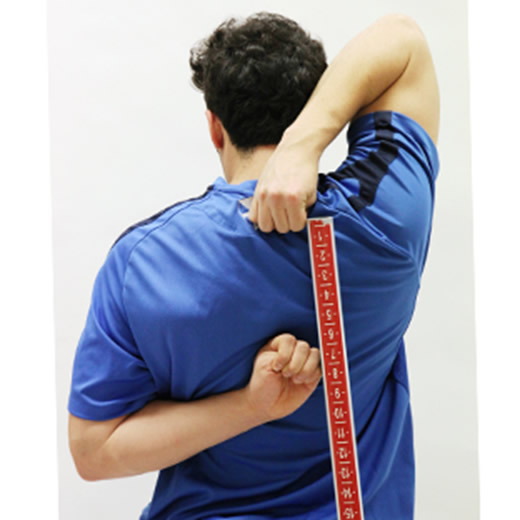
Testing
Make a fist with your left hand and reach up to your back as high as you can go. Now make a fist with your right hand, reaching over the top and down your back as far as you can go. Measure the distance between the two hands as shown in the picture. Make sure to test the opposite pattern as well with right hand travelling up your back and left hand over the top.
Scoring
3 (Optimal) = 10cm or less
2 (Minimally Functional) = 11 to 20cm
1 (Dysfunctional) = 20cm or greater
Once again, imbalances from left to right can often increase your chance of injury within any joint of the body. We have found that a lack of shoulder mobility can contribute to rotator cuff injuries, neck pain, hip pain, and knee injuries. You’re aiming to achieve at least a score of 2 on both sides of the body.
Toe Touch Test
This is a pretty simple test to perform but provides the assessor with some excellent insight into how ‘wound-up’ your neural tissues and fascial connections can be. We have literally seen clients who can lean over and touch their toes one day only to find they are short by 20cm just a few days later. Did their hamstrings and calves really ‘shorten’ by that much in just a few days? Of course not. Any number of stressors caused ‘system wind-up’ within their body, and this was represented during testing.
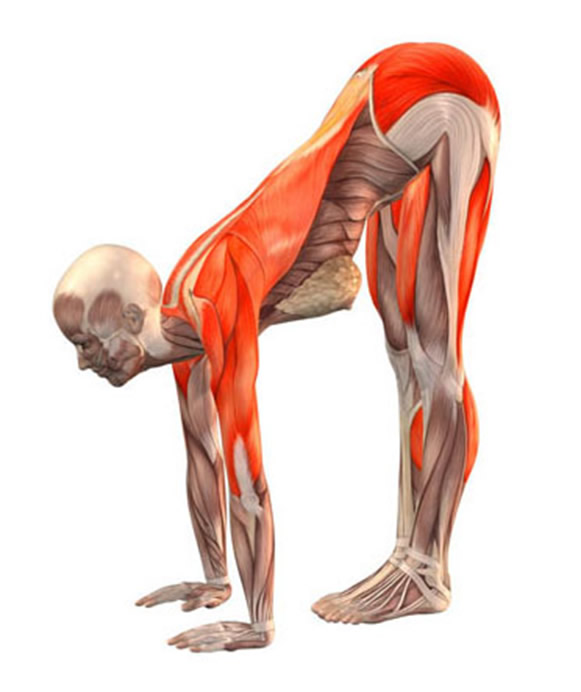
We have a rule at Effortless Superhuman [ES] if you cannot touch your toes then you cannot squat or deadlift!
Testing
Keeping your knees straight, lean over and touch your toes. If you can lay your hands flat on the floor go ahead and do so. If your fingertips do not reach your toes, simply measure the distance from the tip of fingers to the floor and record.
A true test is one in which you are in a relaxed hang, not forcing the movement pattern. Measure this test daily and watch how it changes when you are under significant psycho-emotional stress.
We have a rule at Effortless Superhuman, if you cannot touch your toes then you cannot squat or deadlift!
Inch Worm Test
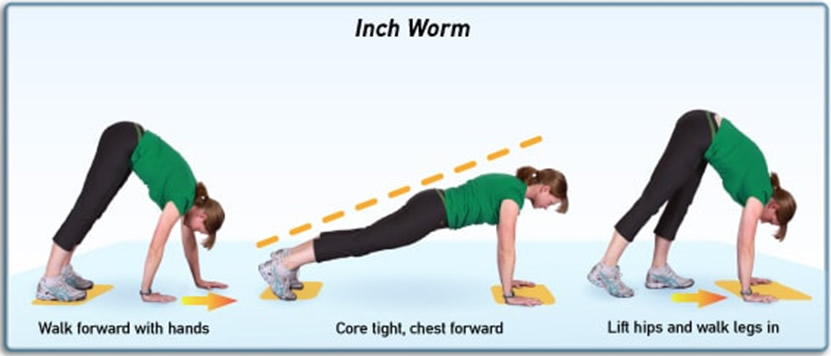
Testing
Begin in the push-up position. Lift your hips high up in the air, then keeping your knees straight, walk your feet towards your hands until there is moderate strain down your back and the backs of the legs. Hold one second. Then walk your hands forwards back into the push-up position. Repeat this action 3 times and measure your best score. The measurement occurs from the heel of your hands to the tip of your toes.
Key Points
- This should be performed in bare feet
- The knees must remain straight at all times
- The feet must remain no more than 20cm apart
- The feet must remain facing forwards and not flare out to the sides
- If the heels cannot stay on the floor, you can keep moving forwards as long as the knees are straight.
Scoring
Zero to 40cm is excellent
41 to 65cm is moderate risk
66 to 80cm is moderately-high risk
81cm plus is high risk
(The risks increase if the score is recorded with the heels off the ground)
This is another excellent measurement of ‘system wind-up’ and can provide our practitioners with some valuable insight into the health of your nervous system, spinal health, and the load being placed on your fascial connections. Once again, we have seen this score change from 45cm to 75cm in a matter of days simply because a client is under significant psycho-emotional stress and/or is suffering from systemic inflammation.

Our skilled practitioners use a wide range of tests to determine how well you move and to gain a feel for your mobility and flexibility. All testing is based firmly on objective measures (measurable outcomes) and not guesswork.
By clearing the HEALTH level of the Performance Pyramid and getting You ‘Clinically Clear’ we give you the best chance of successfully passing the Functional Testing component of the Effortless Superhuman [ES] Method.
Functional Testing assesses mobility and flexibility, stability and strength. Completing this phase of the Effortless Superhuman [ES] protocol moves you swiftly towards a pain-free return to sport or activity.
Whether you use your own skilled CrossFit coach or one of the Effortless Superhuman Movement Practitioners, it’s advisable to have your form assessed on the more technical lifting patterns such as squats, deadlifts, the Olympic lifts, and all kettlebell movements.

Conclusion
Avoiding knee pain in the CrossFit athlete is, of course, going to be multifactorial and requires the participant to analyse themselves critically at all levels of the Performance Pyramid.
- Are you living a healthy lifestyle that checks all the boxes in relation to the Foundation Principles of health?
- Are you putting as much effort into recovery and healing as you are into training?
- Are there significant dysfunctions present (pain and/or joint restrictions and/or muscle length issues) that could be picked up on a whole-body assessment by one of the Effortless Superhuman practitioners? Are these dysfunctions contributing to your knee pain?
- Do you lack in mobility and flexibility? Going through the simple tests as outlined above could help you to self-evaluate if mobility and flexibility limitations are contributing to your knee pain.
- Assuming these three (3) levels of the Performance Pyramid are being met, the next step would be to perform a Risk Assessment that evaluates how well you move on a functional level and provides you with a detailed breakdown of your scores. An overall score will determine your precise injury risk status.
- Movement correctives can then be used to restore proper functional movement and reduce your injury risk.
- At the upper levels of the pyramid, skilled Movement Practitioners can evaluate speed, agility, power and sport-specific movement patterns that are unique to CrossFit. This may include Olympic lifting, speed-based movement patterns, running, plyometrics, and other complex patterns.
It’s through this precise methodology (The Effortless Superhuman [ES] Method) that we have helped hundreds of CrossFit and strength-based athletes to overcome knee pain and return successfully to sport and activity.
To gain a further understanding of the Performance Pyramid, simply contact our office to receive a free Performance Pyramid e-book.
To book an appointment with a Effortless Superhuman ‘Pain and Dysfunction’ practitioner give us a call on (08) 9388 2768 today.
